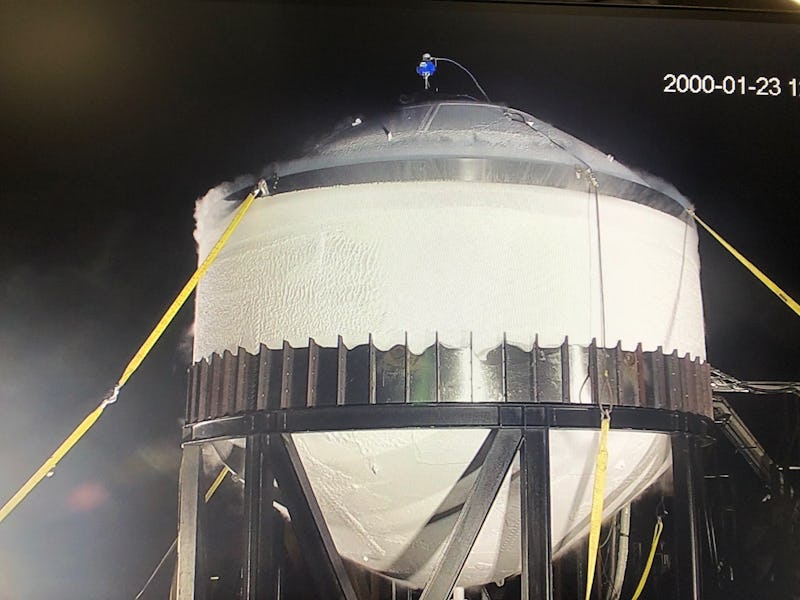SpaceX Starship: why Elon Musk's latest statistic has got fans excited
The race to send humans to Mars has taken a new turn.

"8.5 bar," SpaceX CEO Elon Musk told his 30.9 million Twitter followers in the early hours of Wednesday morning.
While it seems like a rather straightforward readout of SpaceX's latest test results, it was enough to rake in over 2,000 likes in the space of seven hours. That's because the figure, a measure of pressure, represents a major milestone in the development of the Starship. The vehicle, currently under development at the Boca Chica facility in Texas, is designed to one day send humans to Mars and beyond with a fully-reusable design.
See also: The FCC may face legal repercussions for approving SpaceX’s Starlink constellation
"I'm so excited," a Reddit user called "Mars-Colonist" wrote in response to the pressure readout. "In 3 to 4 years it will be time to start saving up for the move to Mars."
But what does "8.5 bar" mean, and why has it sent fans packing their bags for Mars?
A bar is a unit of pressure. Around one bar, or 1.01325 bar to be precise, is the pressure of the atmosphere at sea level. SpaceX is currently stress testing its Starship design by ratcheting up the bars and seeing how it holds.
The reason why 8.5 bar is so exciting is because Musk previously claimed the team needs to reach this pressure to make a rocket safe for humans. On January 10, he explained that six bar is suitable for a regular orbital flight. Sending humans into space requires an increase by a factor of 1.4, which results in a figure somewhere around 8.5 bar.
It's been a long road to reach this point. A previous pressure test in November 2019 blew the top off the Starship Mk.1, the prototype rocket first unveiled at a September 2019 press conference. As an early prototype, Musk declared the incident wasn't worth worrying about too much.
On January 10, SpaceX moved a step further. This time, a shrunken version of the larger vehicle reached a pressure of 7.1 bar.
On Tuesday, the team managed to reach 7.5 bar at room temperature, albeit with a small leak at a weld doubler.
The 8.5 bar reading may seem like a dramatic improvement in the space of around a day, but it's almost to be expected. Tuesday's test was conducted at regular temperatures when the metal is weaker. On Wednesday, the pressure test was conducted under liquid nitrogen cryogenic conditions. Musk previously stated that he expected the material strength to double at cryogenic temperatures. The white coating around the test unit is ice from the freezing conditions.
So is packing the bags a bit premature? It depends on how much time you need to pack. Musk suggested in December 2019 the ship could "hopefully" take its first orbital flight in just two to three months, which means it could fly sometime in March. The first human flight to Mars is expected sometime after the "Dear Moon" mission with Yusaku Maezawa, scheduled for around 2023.
Time to get packing? You may have a bit of time to spare.